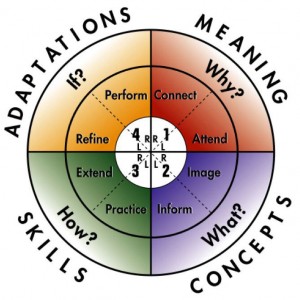Social Studies Blended Learning WordPress:
Virtual learning environments afford ESL students the opportunity to engage with language rich environments that provide socially meaningful context (Warschauer, 2003). Our virtual learning environment is designed for ESL students enrolled in a grade 10 social studies unit on the History of Canada.
ESL students will receive direct instructional support from the classroom teacher as well as their peers. The lesson activities are designed so that they can be completed with a partner during class, while responses to discussion questions and assignments are posted to the online environment. Students can access the WordPress to continue to review the materials and assignments on their own, review their work and monitor their progress in speaking, reading and writing by comparing old entries to new ones.
The WordPress site will host an archive of each weekly lesson. ESL students will have the ability to access lessons before, during and after class, gaining more autonomy and time to review classroom resources (Ilyas, & Kelly, 2011).
When beginning the unit, the teacher will conduct an orientation to the virtual environment during in-person classroom instruction. During class, students will review key postings and assignments in pairs and provide peer-to-peer feedback. In order to reduce barriers to internet access and improve student’s digital literacy, ESL students should be able to receive internet access and technology support after school hours or during breaks in the Learning and Technology lab. Throughout each lesson unit teachers are advised to provide additional technology support and coaching to students via face-to-face conferences.
Purpose and goals of WordPress site:
The purpose of the WordPress learning space is to provide students with an environment that strengthens their autonomy as learners and ability to build personalized content. It will also provide opportunities for language acquisition in a language rich and social environment. The virtual learning environment will create a space where students can socially construct and validate their knowledge and learning from in person instruction. The virtual environment will supplement classroom instruction by providing alternative media sources and activities that address a variety of learning styles, and meet a variety of both student and teacher needs.
Goals for the learning environment:
- To increase the quality of ESL instruction by providing opportunities for personalized learning that is specific to the needs and language level of each student
- To augment the efficiency of the course by providing all the materials to provide anytime anywhere access (flexibility)
- Making the learning process more engaging
- Teaching 21st century skills to prepare them for future employment
ESL Objectives for this unit:
By the end of the unit, students will be able to demonstrate:
- listening comprehension by responding appropriately to peer spoken prompts
- an academic vocabulary by identifying and defining a new key word each week
- critical thinking by categorizing historical events
What is this guide:
This guide provides strategies and tools for using a virtual environment in a blended learning ESL social studies classroom. This guide will outline a selection of tools that you can use to achieve interactivity and promote social learning in the online environment.
Who should use this guide?
- Social Studies teachers: this guide is an ideal tool for social studies teachers with ESL students and can be used to design a single unit or a year long course.
- Social studies students: this guide is a reference for students who wish to learn more about how to use digital tools for vocabulary acquisition, digital storytelling and assessment Students can also add new tools and resources to this guide.
- Parents: can use this guide to help support homework and additional digital activities at home.
Instructional Design:
As teachers we always aim to reach the highest level of bloom’s taxonomy. However, lecture based learning usually does not meet the requirement. Hence in order to reach the highest level we need to understand the way humans learn. 4 Mat cycle of instruction is such a cycle that helps teachers to attend all learning styles and to train students to use both sides of brain to unfold their full potential. Thus we used 4Mat cycle of instruction is in our design to augment student learning.

Recommended Instructional setting
- Number of students in class: 24-30
- Number of groups – 6
- Number of students in one group- 4-5
Visit the User Guide to review sample lesson plans:
Visit the student center to see student pages and activities:
- Student Center – Activity 1: Connecting Through Story
- Student Center – Activity 2: Confederation Simulation
Tools User Guide:
The interactivities in this project will rely on a constructivist, cooperative and engaging approach that comprises a variety of resources, both original and adopted. The digital interactivities will provide student-centered, blended ESL learning opportunities within a supportive online learning opportunity- facilitated by the teacher, where learners can manage and plan their studying independently, all the while working collaboratively.
Visit the Digital sandbox for a full listing of tools that can support the learning in this classroom. Students should meet one on one with their teacher to discuss their project goals and identify the most appropriate tools that will allow them to achieve these goals.
